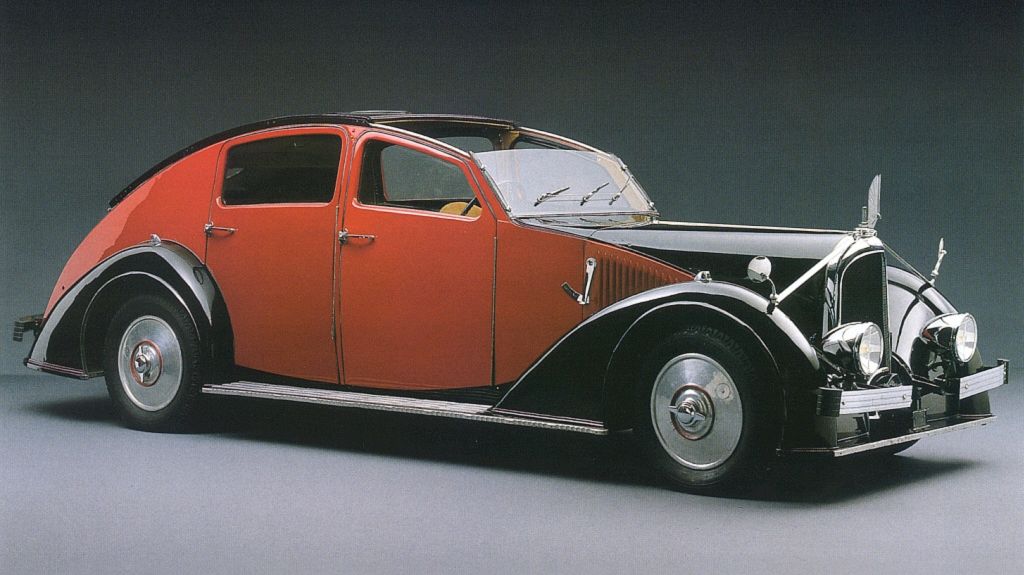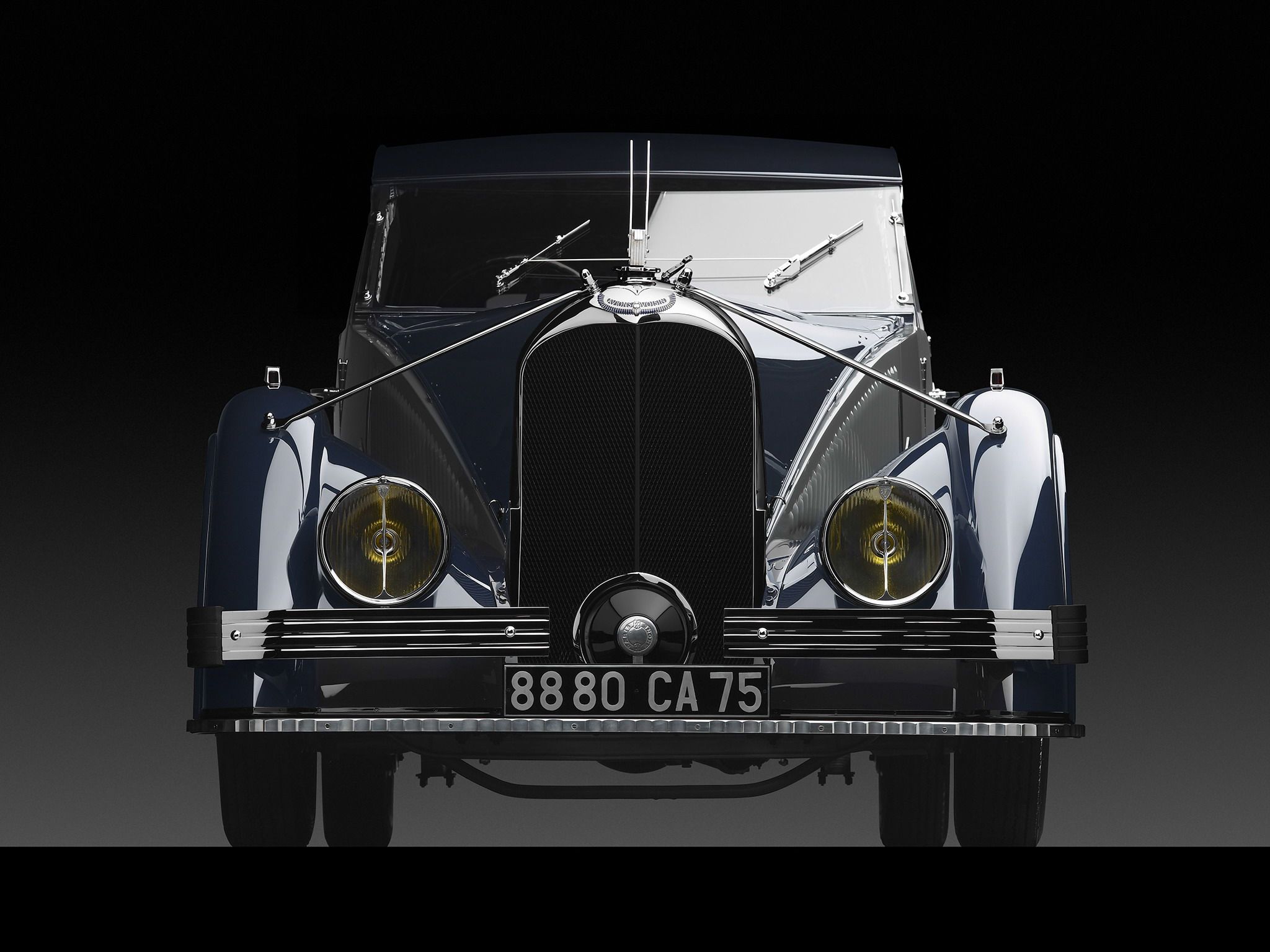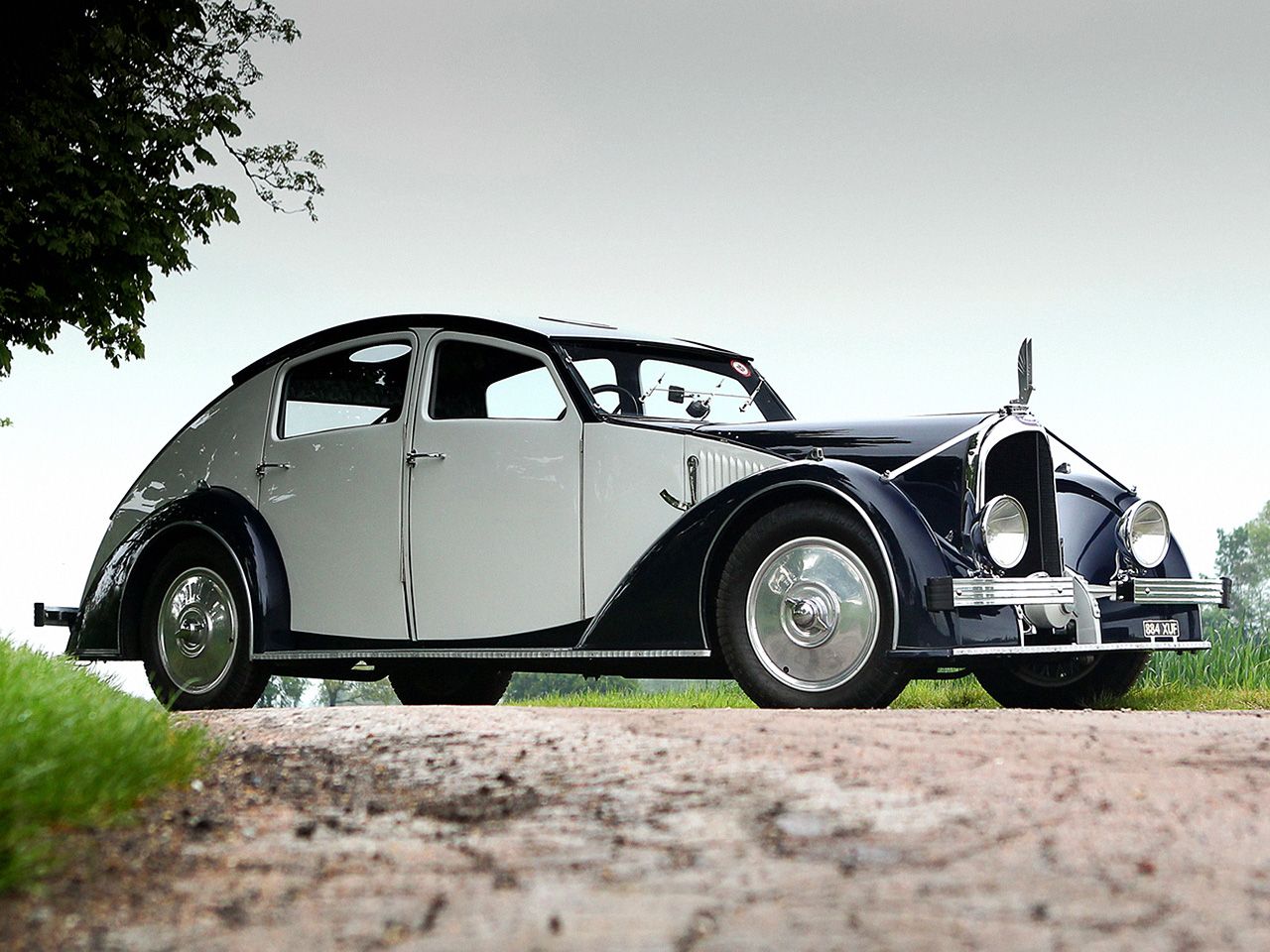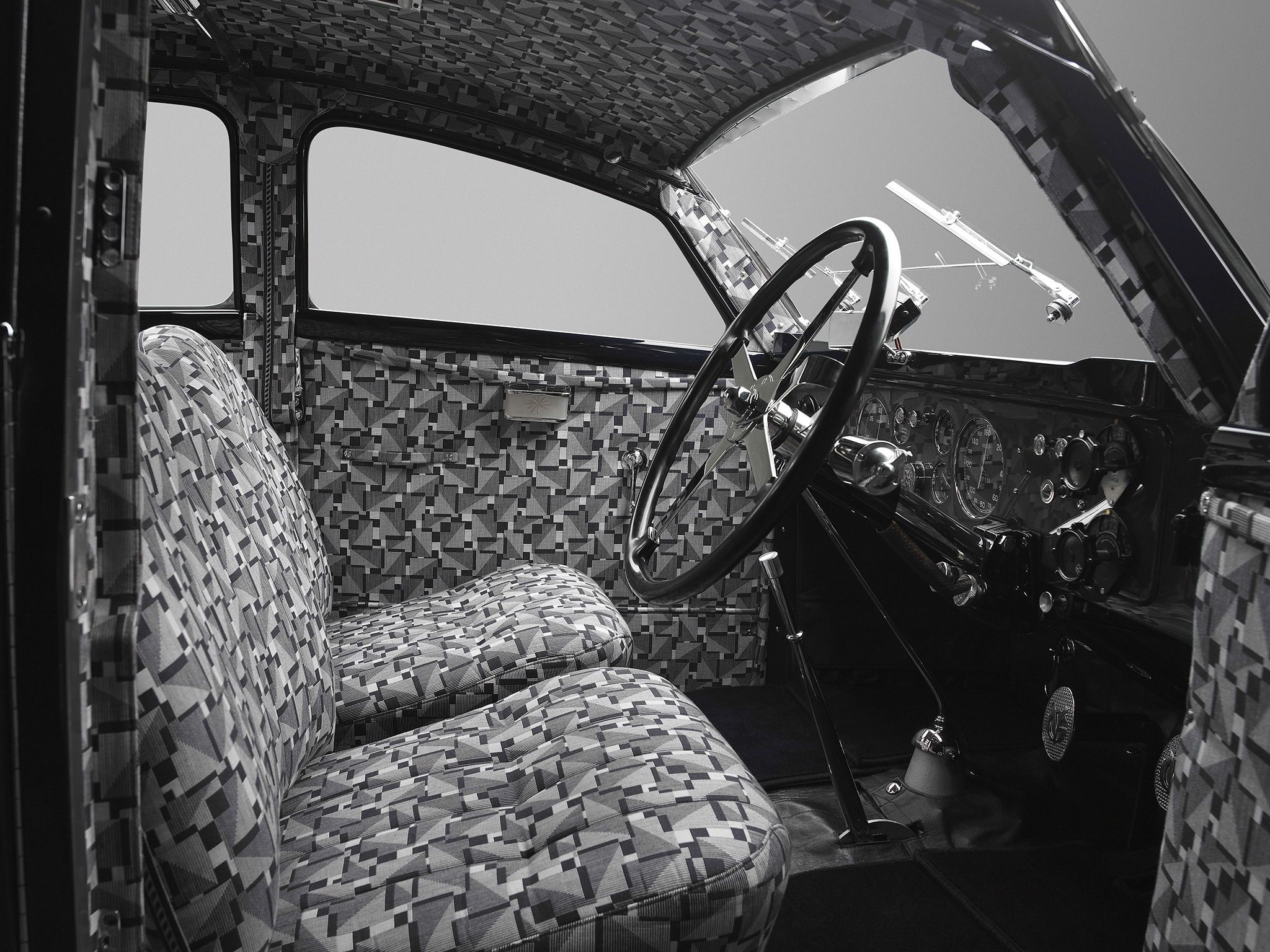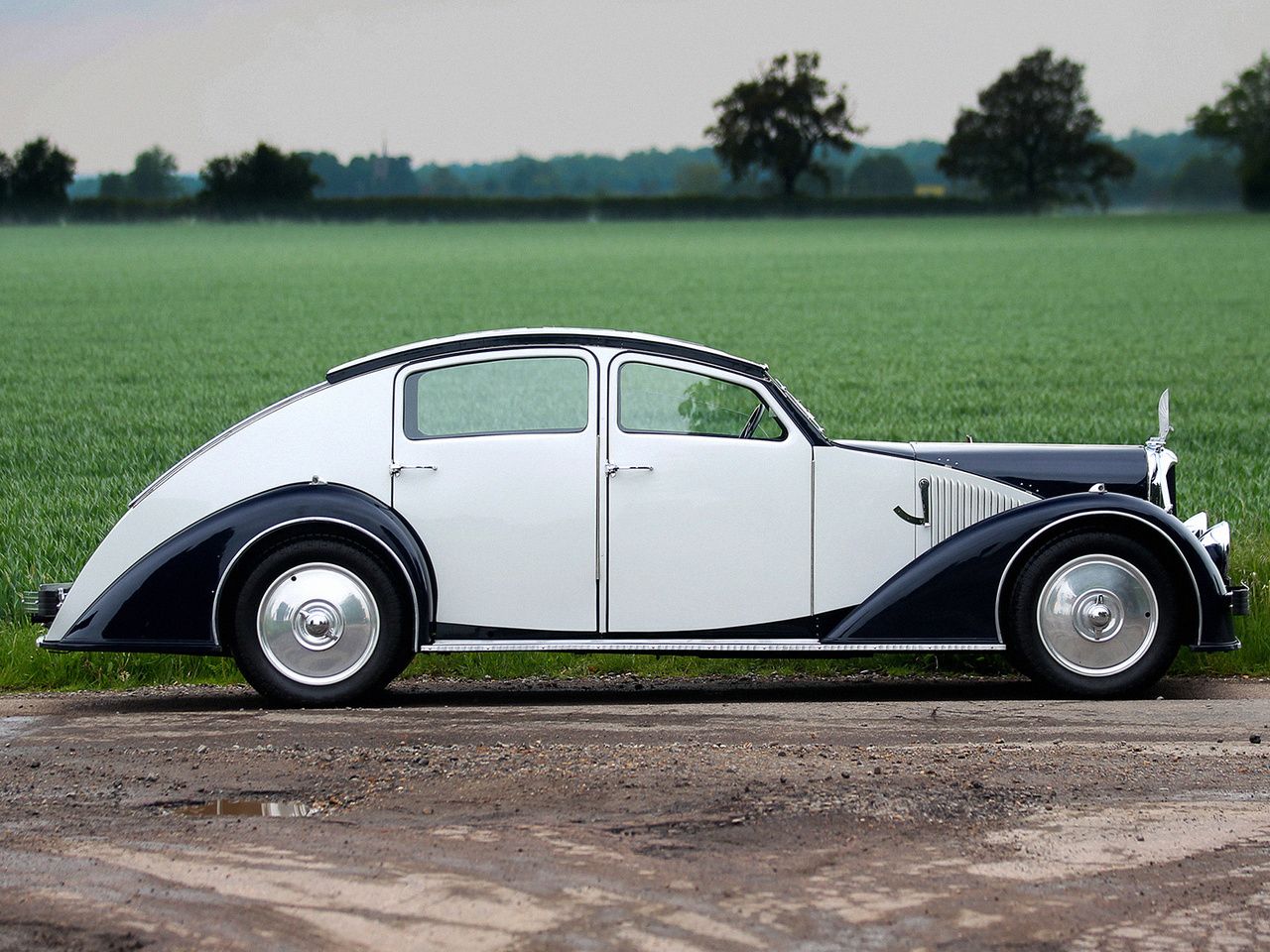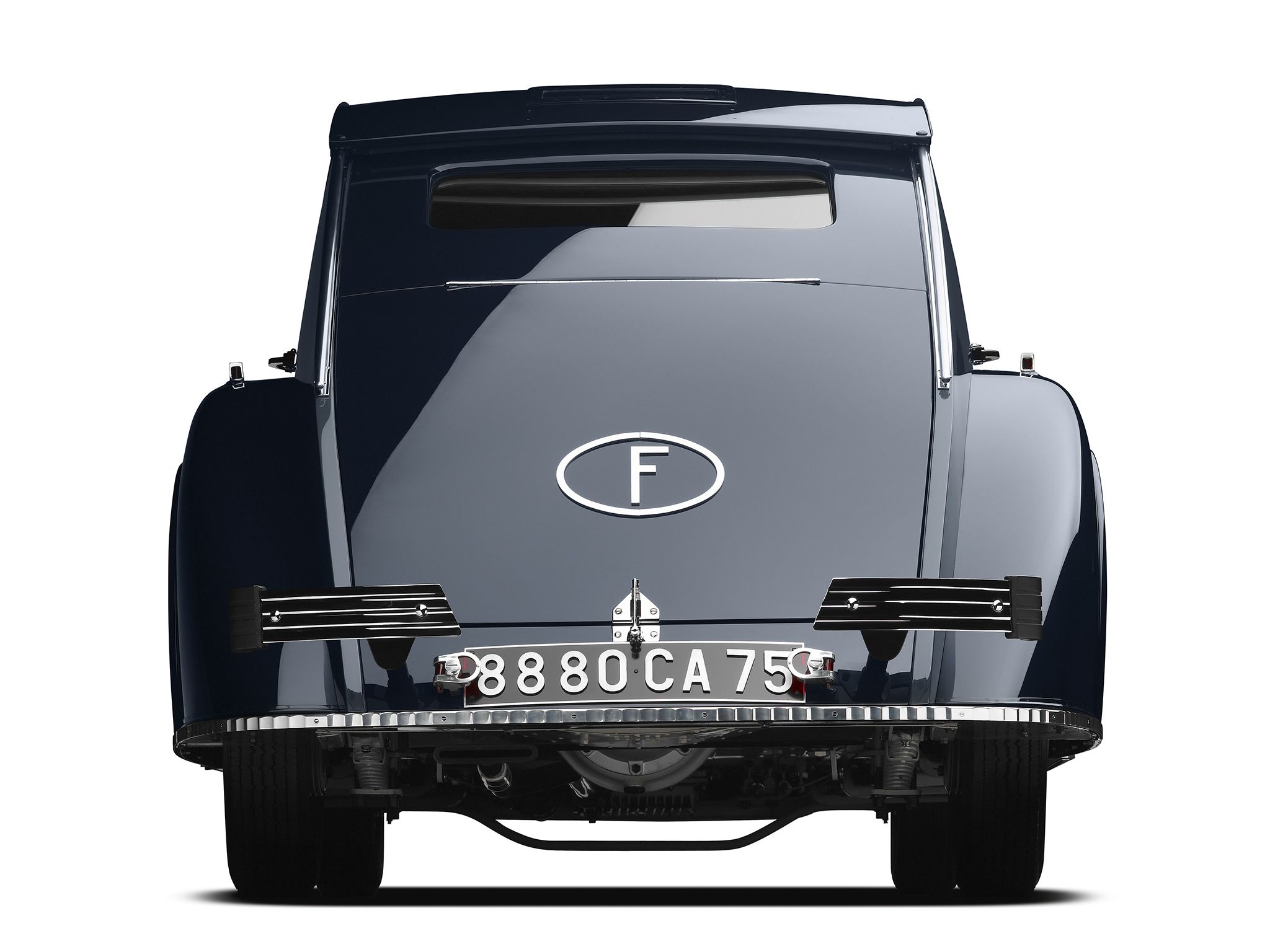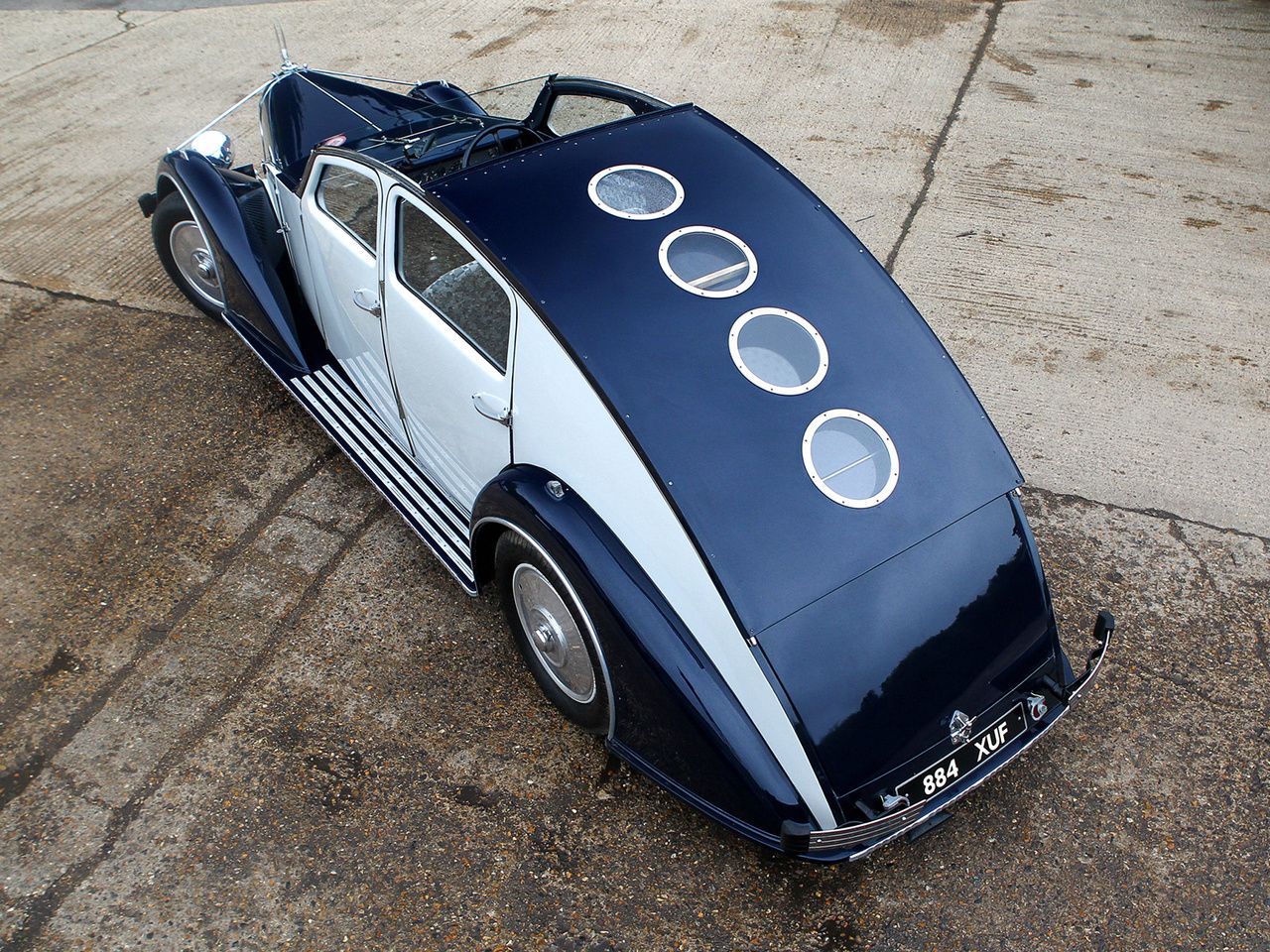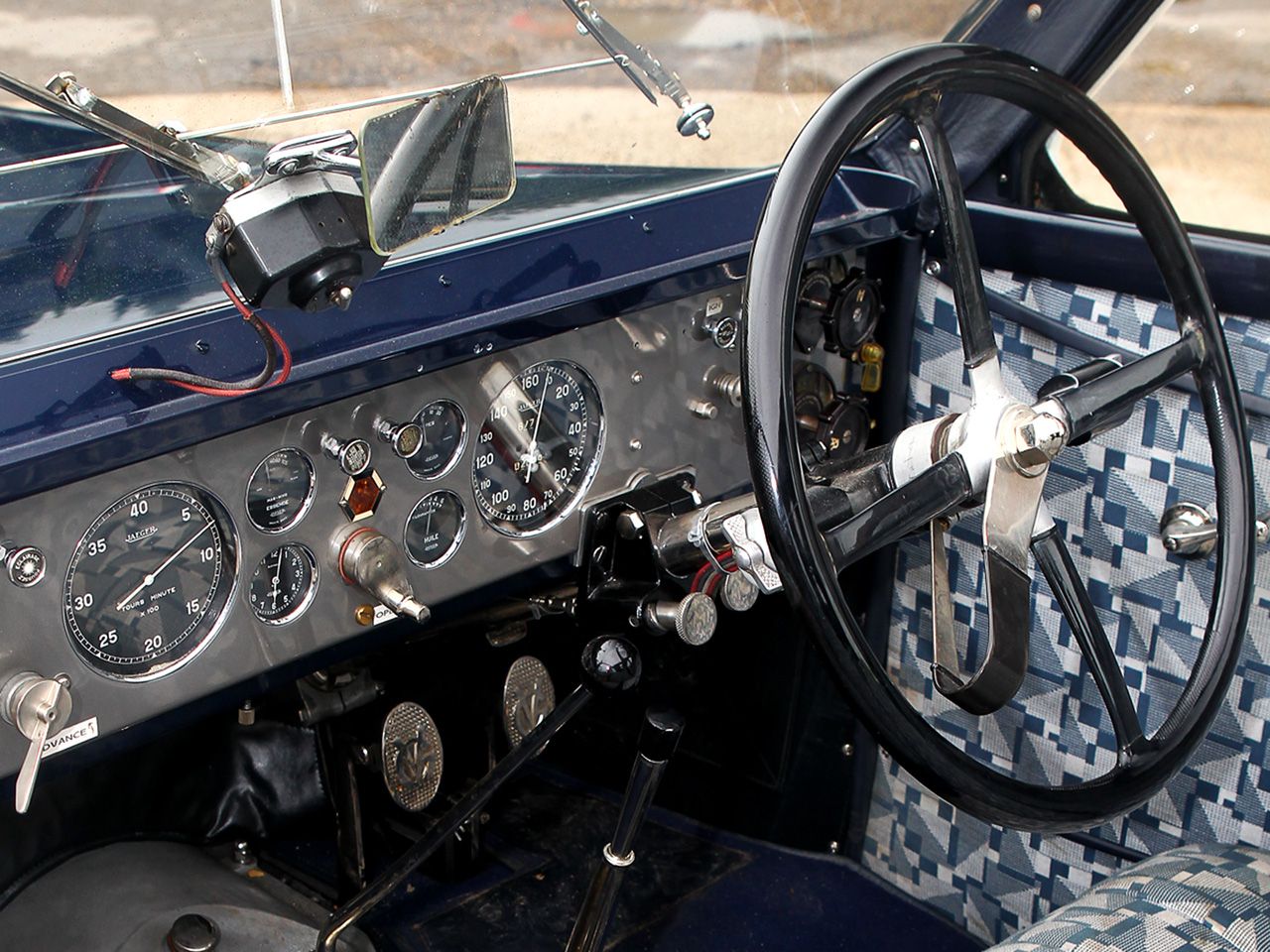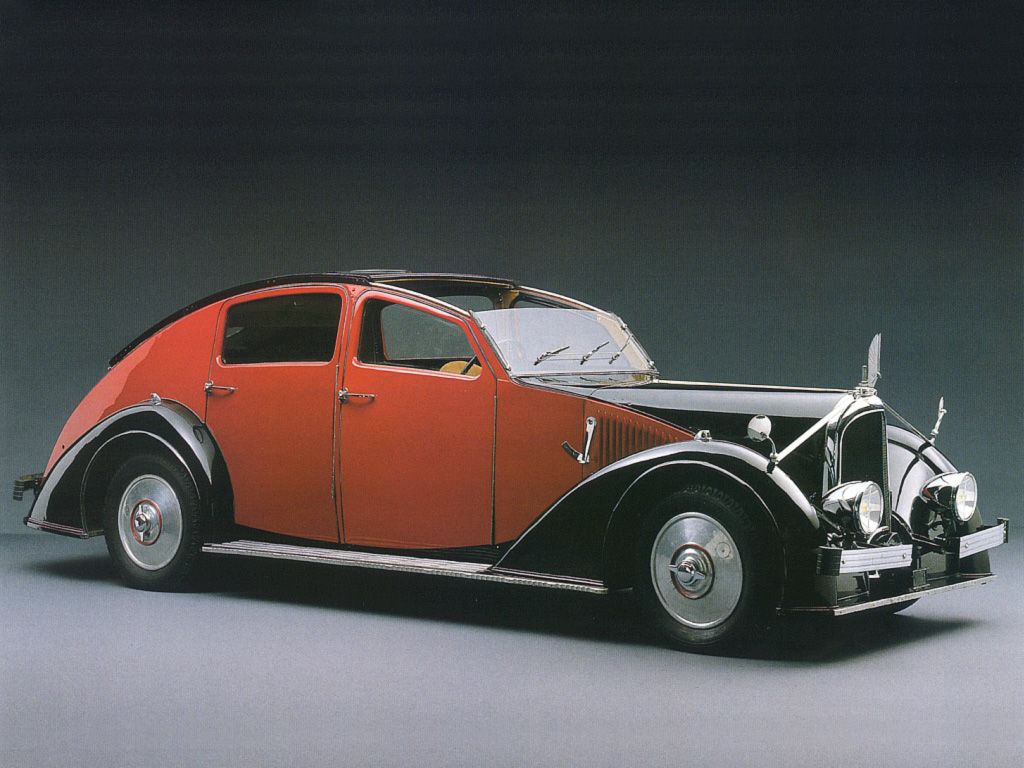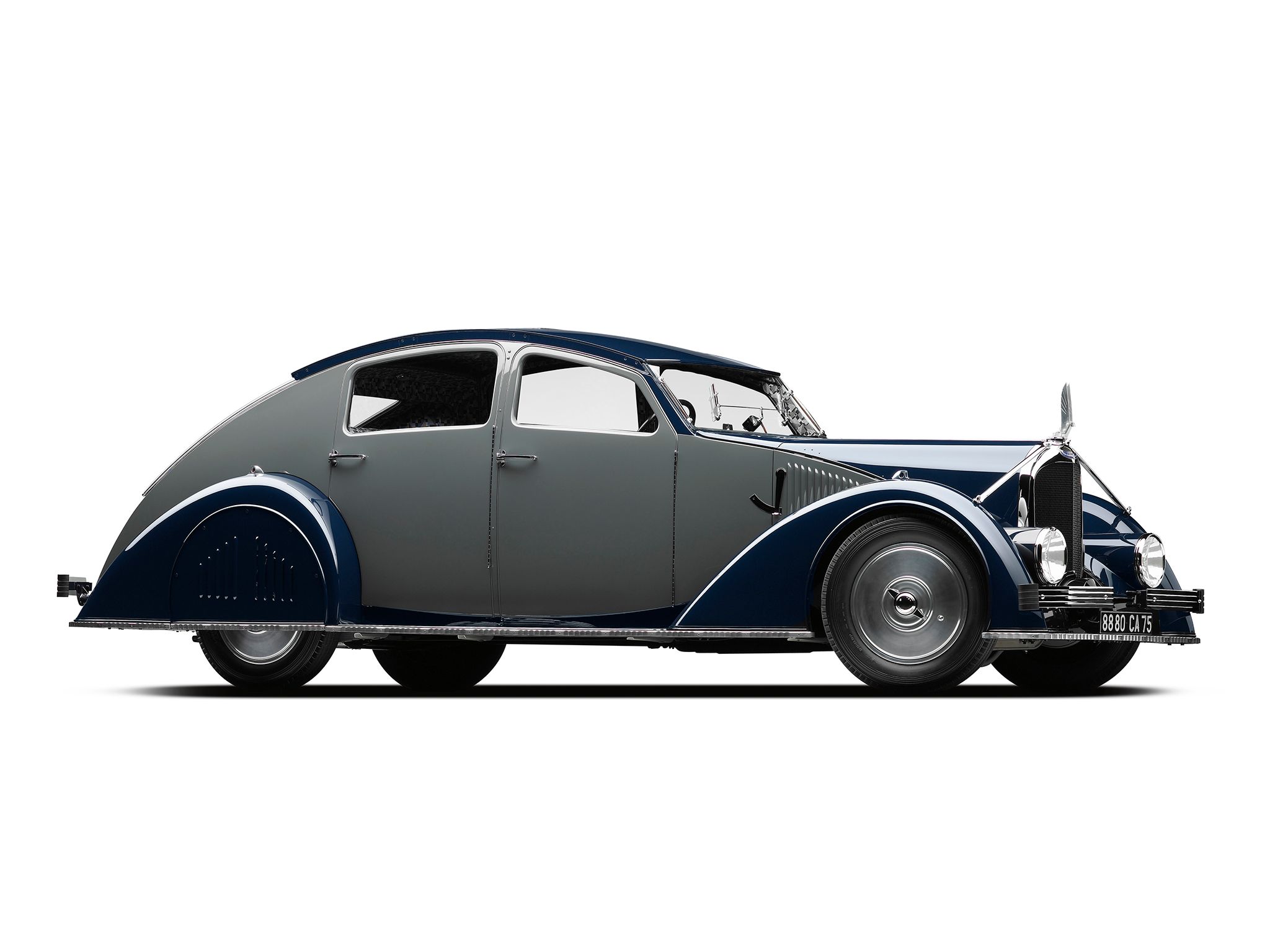Part airplane, part spaceship, the Avions Voisin C25 Aerodyne looks as though it drove right off of a retro-futuristic Art Deco poster. The C25 Aerodyne is so radical that it doesn't even look real at first, but in the spirit of wildly individualistic cars since the dawn of the industry (and of wildly iconoclastic French cars since…about the same time), it was indeed a production vehicle. Of course, there weren't many of them produced.
Most noted for his aircraft designs, Gabriel Voisin and his company built aircraft during WWI. After the war, he formed Avions Voisin to build cars. The C25 Aerodyne was perhaps the ultimate expression of Gabriel B. Voisin’s unique automotive vision, which was heavily influenced by his aviation backround. Founded in 1919, Avions Voisin produced extravagantly designed cars with exotic sleeve-valve engines. Faced with flagging fortunes due to the Great Depression, Avions Voisin curiously chose to focus on high-end exotic vehicles, of which the C25 Aerodyne was one of the most memorable. Described as a “car of the future” when first displayed at the Paris Salon in 1934, it was a silent-running and impressive piece of automotive art.
The C25 Aerodyne was extremely expensive for the time, priced higher than a 1933-1938 Bugatti Type 57, and the engine’s performance, while silent and luxurious, fell somewhat short of its futuristic looks. Ironically, it also represented the last gasp of the company, which was in the process of losing its most talented employees even as the C25 was making its debut. A poor economy and WWII quickly put an end to the business. Only eight C25 Aerodynes were produced.
Continue reading to learn more about the 1935 Avions Voisin C25 Aerodyne.
avions-voisin-c25-aerodyne
- Make: Array
- Model: avions-voisin-c25-aerodyne
1935 Avions Voisin C25 Aerodyne
- Make: Array
- Model: 1935 Avions Voisin C25 Aerodyne
- Engine/Motor: inline-6
- Horsepower: 90 @ 3500
- Transmission: 2-speed
- [do not use] Vehicle Model: Array
Exterior
The C25 Aerodyne could almost have been intended be a small, wingless airplane. The tapered front end and curved, teardrop-shaped body with integrated trunk were very similar to the cabins of contemporary passenger aircraft. Details like the round porthole-style skylights on the roof and flex-reducing trim bridging the gap between the front fenders and radiator grille also served as reminders of Voisin's airplane engineering skills.
Aerodynamic wheel covers smoothed airflow and gave the car a sleeker look. The roof was retractable, sliding back over the back of the car to open the interior to the sky. With the roof retracted, the foremost roof porthole became the rear window. Additionally, the windshield's lack of an upper frame gave the front cabin an extremely airy feel with the roof open.
Exterior Dimensions
|
Wheelbase |
3280 MM (129.1 Inches) |
|
Front track |
1,400 MM (55.1 Inches) |
|
Rear track |
1,350 MM (53.1 Inches) |
|
Length |
4,870 MM (191.7 Inches) |
Interior
The resemblance to an airplane continued on the interior, with multiple toggles, pull switches and dials, and a shortwave radio built into the dash. The C25 Aerodyne was even upholstered in a wild, art-deco pattern that looks like it was thought up by an airline. Voisin was known for luxury as well as elaborate upholstery design, and the car featured Jaeger gauges and Lalique crystal ashtrays. The rear seats folded down to improve cargo space.
Drivetrain
The C25's underpinnings were just as high-tech as the sheet metal; Voisin was a dedicated proponent of the sleeve-valve engine. Knight provided the 3.0 liter twin-carb inline six-cylinder sleeve-valve powerplant, whose silent operation and high rev capability were the chief attractions. Power output was mild for the time, at just between 90 and 105 horsepower (especially considering the Bugatti Type 57 which was at least twice as powerful) and the sleeve-valve engine's tendency to burn oil and blow smoke even when in good tune could be a touch embarrassing.
That said, Gabriel Voisin wasn't concerned with outright performance. He envisioned the C25 Aerodyne as a strong yet stately car, offering effortless speed. The two-speed transmission featured an electromagnetic overdrive for both gears for four-speed operation. Like the sleeve-valve engine, it was also designed for quiet operation. Top speed was just over 80 mph.
Live axles front and rear were supported by leaf springs and adjustable shocks controlled from the dash. Voisin used hydraulic drum brakes at all four corners.
Drivetrain Specifications
|
Type |
2,994 CC Knight Sleeve-Valve Inline 6-Cylinder Engine |
|
Output |
90 HP @ 3,500 RPM |
|
Transmission |
2-Speed Gearbox with Electromagnetic Overdrive |
Prices
Voisin priced its art-deco masterpiece at 88,000 francs, making it significantly more expensive than a Bugatti->ke16. Rare and expensive even when new, the C25 Aerodyne continues to command high prices on the collector market on the rare occasions that one comes up for sale. Further increasing the value is the scarcity of restoration parts and information: many Voisin records have been destroyed, leaving experts with little to go on and increasing the value of restored examples. Of the eight C25 Aerodynes built, there are only four known survivors, one of which sold for $1,925,000 at Pebble Beach in 2013.
Competition
1933-1938 Bugatti Type 57 Atlantic
Less art deco than the C25 Aerodyne but just as extravagant, if not more so, the Bugatti Type 57's star power burns bright to this day. The Atlantic is perhaps the most iconic of the Type 57s, thanks to its teardrop-shaped body and distinctive roof fin. It was based directly on a Bugatti concept car->ke169, and three of the four examples built survive today.
You can read more about it here.
Conclusion
Gabriel Voisin had a distinctive vision for the future of the automobile, that culminated in the C25 Aerodyne. Unfortunately that's as close as he got before the company was shuttered. This wildly innovative, airplane-inspired car remains one of the best examples of French art-deco automotive design.

